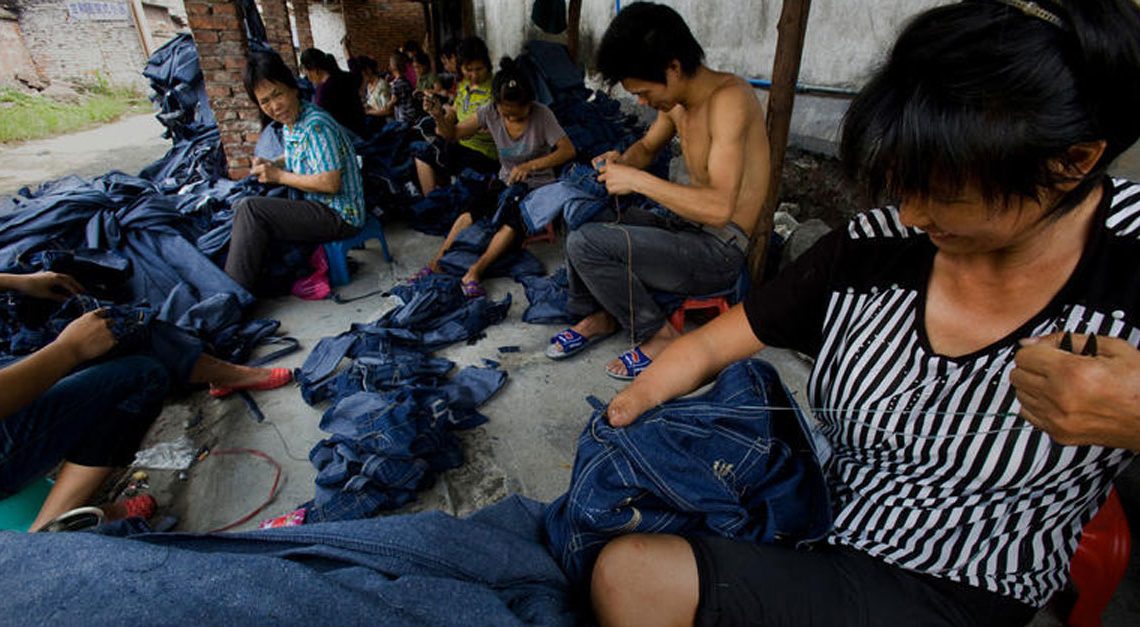Are my denim jeans bad for the environment?
The short answer is yes, but there is a process for recycling denim that we could all use.
Go through your wardrobe and chests of drawers and count how many pairs of denim jeans you own; blue, black, grey, vibrant coloured or stonewashed, I’m sure we all own at least one pair – on average, we actually own 4 pairs!
Recycling and being actively environmentally conscious has had a positive impact so far and we are more mindful of things like ‘one time use’ disposable plastics and ‘gas-guzzling’ cars, often now avoided for the benefit and health of our planet. But a lot of us will get up, get ready and slip into a comfortable pair of jeans to start our day; and jeans are one of the worst environmental offenders!
Although blended with other synthetic fibres, denim is mostly made of cotton fibres and cotton is known to be a very thirsty plant indeed. Did you know that to produce 1 kilo of cotton requires 7,660 gallons of water? We all know that tomatoes are thirsty plants; don’t water them and they will wilt every 5 minutes during summer, but to produce 1 kilo of luscious ripe toms only requires 76 gallons of water – that’s a staggering one one-hundredth less than cotton needs.
Xintang in southern China is known as the denim capital of the world and it is responsible for 1 in 3 pairs of denim jeans purchased. Xintang’s rivers run blue, are foul-smelling and full of toxic substances including mercury, lead, and copper which the local people rely on for drinking and bathing. This has had a dreadful effect on communities who have experienced illness, lesions, rashes and even infertility.
The process that denim goes through means that it is highly destructive and water intensive; the dyeing and finishing process is particularly harmful using chemicals such as bleach to soften, fade, or give texture to the material. The final look we love so much and continually buy from our shops is very much dependent on the treatment type of the denim to achieve such styles as stone-washed, acid-washed, distressed, light-washed, but one thing they all have in common is the intense water consumption, chemical treatment and damage to the environment.
Changes are coming!
The plight of Xintang came to the attention of the Chinese government a few years back and since then over 70 denim-making facilities have been shut down and whilst this is a positive move for the environment, financially this means more than $1 billion of local economic loss. Denim is big business and now companies are being forced to find new ways to continue to make our much-loved jeans by developing new and safer production techniques that need far less water and factories are powered by renewal energy.
What can you do to help the process of recycling denim or lengthen its lifespan?
- Wear your jeans for as long as possible and ditch the ‘fast fashion’ temptation; after all ripped jeans are fashionable!
- Take your jeans in for mending when the seat of your pants has really gone rather than binning them.
- Buy second hand jeans and give someone else’s pre-loved jeans a second shot at life.
- Buy quality denim that will last you much longer than cheap alternatives.
- When they really have worn out beyond all hope, recycle and repurpose the material into an accessory like a handbag; your much-loved American classic might just need a makeover.
Another simple process for recycling denim is recycling through a recycled clothing and textiles bin in your local area, or you could even order your own branded bin from the team at Kids Just Recycle for your school, after school club or community centre. We pay you £300 per tonne for your pre-loved jeans and other clothing, paired shoes and household textiles, so you can earn whilst you save the planet one pair of jeans at a time.
For more information, call our friendly team today.

